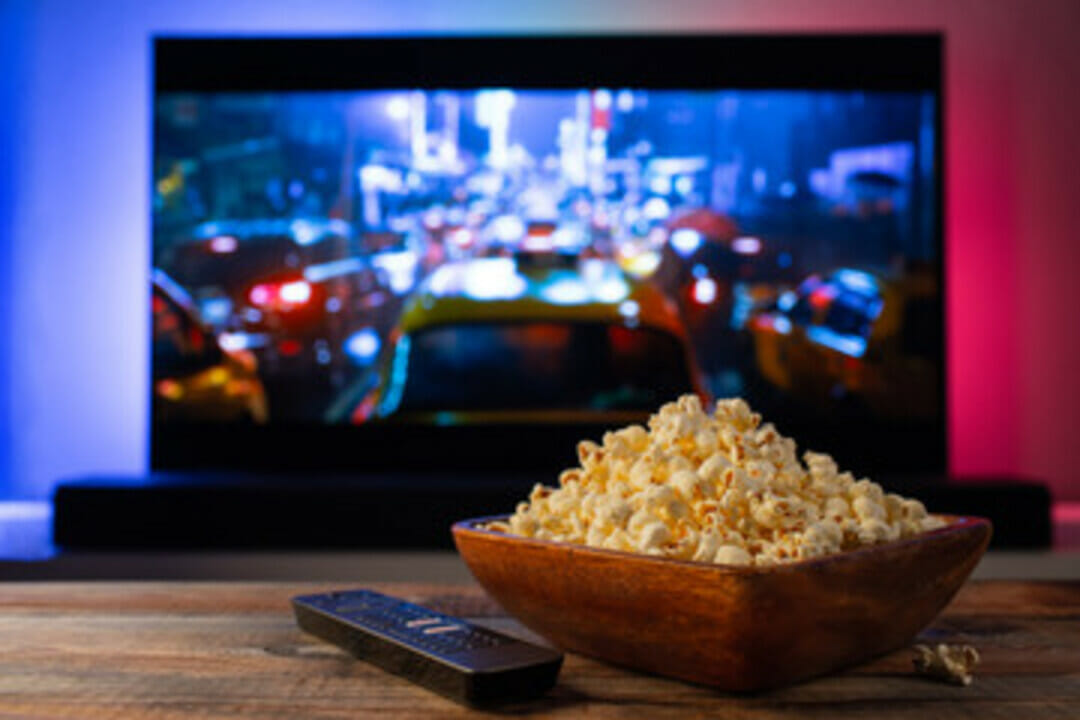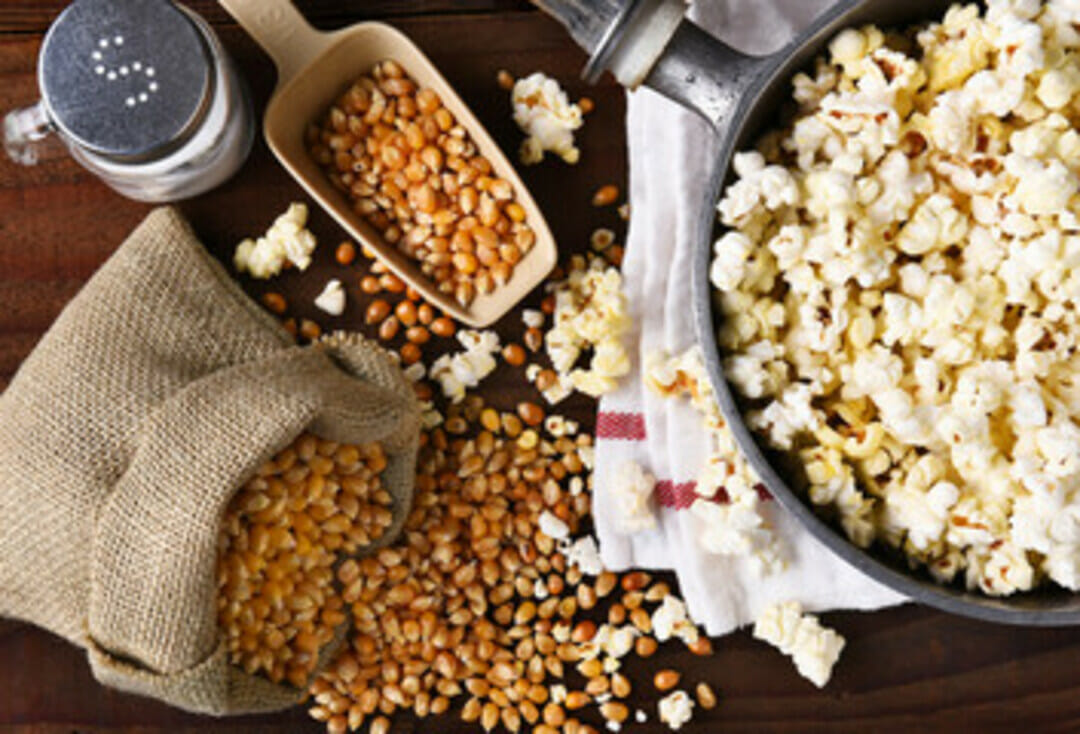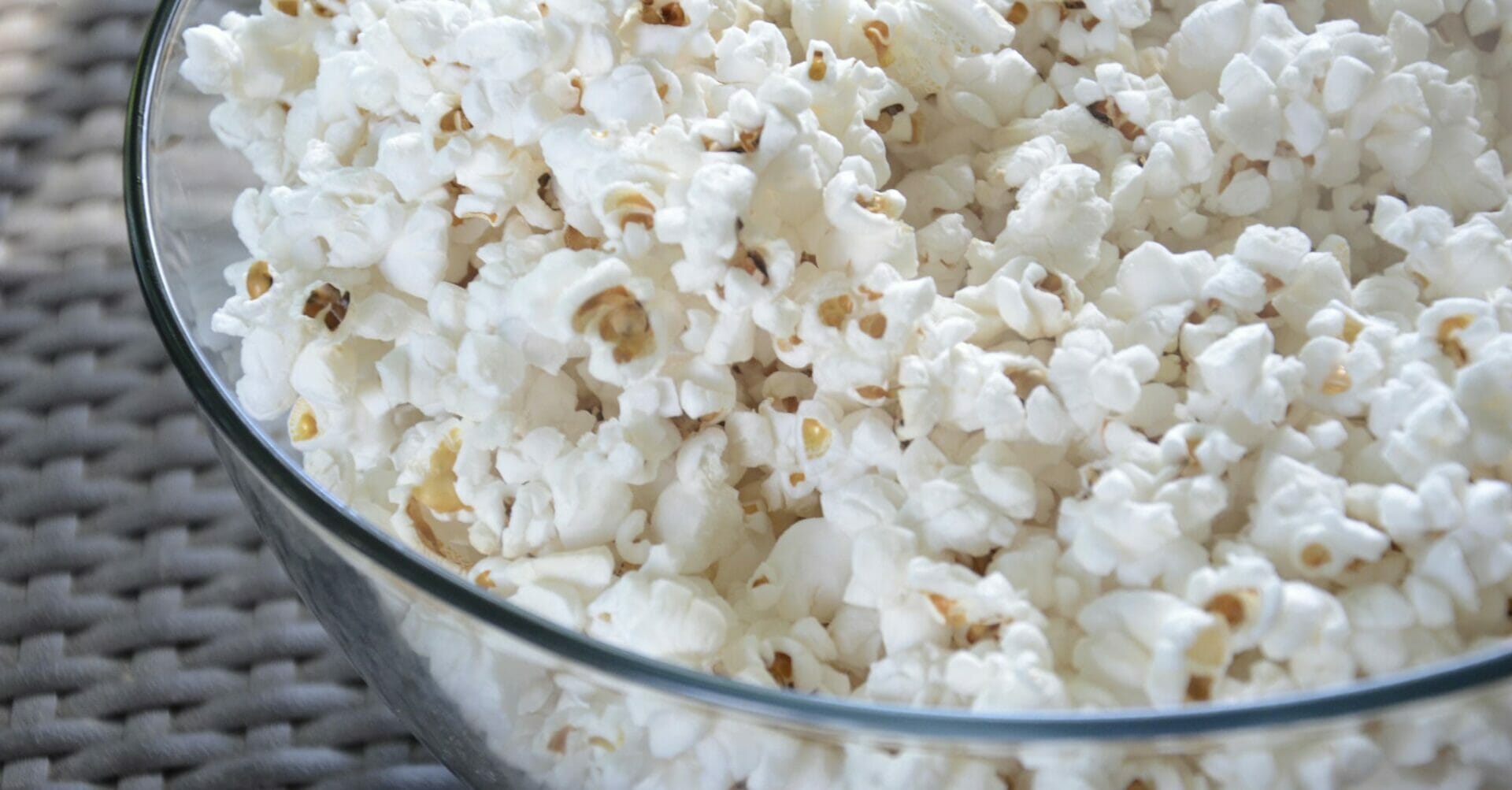Popcorn is a popular snack that is high in essential nutrients. Popcorn is a type of corn kernel that puffs up and expands when heated. The strong hull of a popcorn kernel contains the seed’s hard, starchy shell endosperm, which contains 14–20 percent moisture and converts to steam when heated. It has a number of health benefits. It can, however, be prepared with excessive amounts of fat, sugar, and salt, which can lead to overeating. As a result, it is critical to properly prepare your popcorn. Depending on how you prepare it, it can be either extremely healthy or extremely unhealthy.
Nutrition Value of Popcorn
Popcorn is high in fiber and antioxidants, which can help prevent some serious health problems. Popcorn nutrients include, in addition to these key ingredients are Folate, niacin, Riboflavin, Pantothenic acid (thiamine), Vitamin B6, Vitamin B12, Vitamin C, Vitamin D, Vitamin E, and Vitamin K. 100 grams of air-popped popcorn contains 387 calories, 13 grams of protein, 78 grams of carbohydrates, 5 grams of fat, 15 grams of fiber, 7% vitamin B1 (thiamine), 12% vitamin B3 (niacin), 8% vitamin B6, 18% iron, 36% magnesium, 36% phosphorous, 9% potassium, 21% zinc, 13% copper, and 56% manganese.
Homemade popcorn is best
There are numerous ways to enjoy popcorn, but the most common is to purchase it pre-packaged and microwave it. Microwave popcorn, on the other hand, has some risks. The bags are frequently lined with a chemical known as perfluorooctanoic acid (PFOA), which has been linked to a number of health issues including ADHD, low birth weight, and thyroid issues.
Diacetyl, a chemical found in artificial butter flavoring, may also be present in microwave popcorn. Diacetyl has been associated with lung damage. Although the risk to the general public has not been determined, animal studies have shown that inhaling diacetyl can damage your airways and cause lung diseases. Microwave popcorn is frequently made with hydrogenated or partially hydrogenated oils, which contain trans fats, which are harmful. Trans fats have been linked to an increased risk of heart disease and other serious diseases in studies. Even if a brand claims to be free of these chemicals, people may want to avoid it because it may contain other ingredients that are harmful to your health.
You can also make popcorn on the stovetop the old-fashioned way
The next best way to make a batch is on the stovetop. In a deep saucepan, swirl about 1 tablespoon of olive, walnut, or avocado oil (avoid coconut, flax, and palm oils, which are high in saturated fats). Heat the oil in a pan, then add enough popcorn to cover the bottom. Maintain medium-high heat. Move the pan back and forth on the burner to prevent the popcorn from burning or sticking. When the popping noises slow down to every few seconds, it’s ready. Don’t be concerned about un-popped kernels; you usually have a few.
Microwave popcorn may not be as healthy as you think
Although it may appear to be convenient, microwave popcorn can be high in fat and sodium, and there is a wide range in what brands contain. Some brands have up to 10 grams of fat for 2 cups, which is a lot for one serving. “That’s about the same as what’s in a bag of potato chips.” If you do choose microwaveable varieties, read the label and look for brands with less than 200 mg of sodium per serving and the fewest number of fats grams (which, unfortunately, is often around 6 or 7 grams per serving).
Pre-popped or pre-packaged bags are a convenient on-the-go snack. However, they may not be the best option for you. Again, read the label and try to find those that meet your daily nutritional needs, such as those with the lowest amount of sodium.
And, although it probably goes without saying, limit your intake of kettle corn and caramel corn, both of which contain a lot of added sugar. If you want to indulge, measure out one serving and pour it into a bowl; otherwise, you’ll find yourself dipping your hand into the bag all the time! Finally, the worst of the worst is movie theatre popcorn: A small bag contains approximately 1000 calories and a whopping 40 grams of fat.

How to Make Healthier Popcorn
Do you want to make your own healthy popcorn at home? Here’s what you’ll need and how to do it.
• 2 tablespoons oil
• a third to half cup popcorn kernels (or enough to cover the bottom of the pan)
Instruction:-
You can microwave popcorn in a microwaveable popcorn bowl or use a countertop air popper, or try this simple stovetop method:
In a heavy-bottomed deep pan, heat 1 to 2 tablespoons olive, walnut, or avocado oil (avoid coconut, flax, and palm oils, which are high in saturated fats). Cover with a lid and heat the oil on medium-high for a few minutes before adding about one-third to one-half cup popcorn, or enough kernels to cover the bottom of your pan. Cover.
Wait for the first pop, then begin moving the pan back and forth on the burner to prevent the popcorn from burning or sticking. Hold the lid in place with an oven mitt as you shake it to prevent the popcorn from jumping out of the pan. When the popping noises slow down to every few seconds, your popcorn is ready. Don’t be concerned about unpopped kernels; you’ll get a few. Add a drizzle of melted butter and a sprinkle of salt to taste. Make sure to season the popcorn with salt or other seasonings (cinnamon, cayenne pepper, parmesan cheese, etc.) while it is still warm.
Seasonings of plain popcorn is too bland for you. Just make sure to add it while the popcorn is still warm so it sticks to it. Another tip is to lightly spritz the flavors with water to help them stick. Salt, chili powder, and a splash of lime juice; parmesan cheese, garlic powder, and Italian herbs; cayenne pepper for a little kick; balsamic vinegar for a savory punch; or cinnamon with a drizzle of dark chocolate for a sweet tooth are all excellent combinations.
Uses of Popcorn
Other than as a snack or food, popcorn has a variety of applications. One of these is that it is strung together and hung on Christmas trees as decoration. This custom is widespread in North America and the Middle East. The other application is for packaging. This is less common because it is a risky and difficult packing material to use because it is flammable and attracts insects and animals, which is a disadvantage of using popcorn.

History of Popcorn
Popcorn Production
Corn was domesticated in Mexico over 9,000 years ago and is still one of the most important vegetables produced each year around the world. Popcorn as a snack has been discovered in archaeological sites in Mexico dating back to 3600 B.C., and unsubstantiated claims suggest that Squanto himself taught European settlers how to popcorn during the expansion of North America.
The history of popcorn is not entirely documented, but it appears that its popularity soared first in the Great Lakes region, where the Iroquois people settled in large numbers. The first reliable references to “popped corn” date back to around 1820, and records from the mid-1800s mention popcorn as a popular family treats.
Popcorn’s popularity increased again in the 1890s, thanks to candy store owner Charles Cretors. In order to better roast nuts for commercial sale at his store, he invented the first commercial-grade popcorn popper, which he later displayed in a horse-and-buggy style design. Then came the early 20th century, when popcorn in a movie theatre became commonplace.
Health Benefits
Eating popcorn has a few health benefits. Popcorn, in addition to being high in fiber, contains phenolic acids, a type of antioxidant. Polyphenols are antioxidants that help to protect our cells from free radical damage. Polyphenols have numerous health benefits, including improved blood circulation, digestive health, and a lower risk of many diseases. Polyphenols have also been linked to a lower risk of cancer, including prostate and breast cancer, according to some research. Furthermore, popcorn is a whole grain, which is an important food group that has been linked to a lower risk of diabetes, heart disease, and hypertension in humans.
Diabetes Risk Reduction
Humans have been shown to benefit from whole grains in a variety of ways. One significant advantage of eating whole grains is a lower risk of type 2 diabetes, which has been demonstrated to be especially true for middle-aged men and women.
Furthermore, popcorn has a low glycaemic index (GI), which means it may help you maintain your blood sugar levels more easily and avoid the fluctuation associated with high GI foods. Low-GI diets can help people with type 1 or type 2 diabetes improve their glucose and lipid levels.
Antioxidant Potential-Fights Chronic Disease and May Prevent Aging
Polyphenols act as a potential antioxidant in the body, which aids in the reduction of oxidative stress, the prevention of chronic diseases, and the reduction of signs of aging. Researchers discovered that the pericarp of the kernel contains potentially high concentrations of polyphenolic compounds and fiber.
Furthermore, popcorn contains only 4% water, whereas fruits and vegetables contain 90% water, causing polyphenols to be diluted. However, when determining polyphenolic bioavailability, it is critical to consider the preparation method. Some of the chemicals in the packaging material actually degrade or destroy the phenolic compounds in the hull, significantly reducing its ability to protect your body from free radicals or oxidative stress. When compared to microwave cooking, air-popped popcorn may have a higher bioavailability of antioxidants. Buttery and oily toppings may also reduce the antioxidant benefits of popcorn. Eating antioxidant-rich foods like popcorn may not only help you avoid developing a chronic disease, but it may also help you avoid developing age-related symptoms like wrinkles and aging.
Lower the Risk of Hypertension
Eating popcorn without a lot of added salt or butter may help you lower your blood pressure or lower your risk of developing high blood pressure, in addition to lowering your risk of diabetes and heart disease. Furthermore, soluble fiber, a type of fiber found in whole grains, helps to lower cholesterol levels by binding to cholesterol in the small intestine and preventing it from being absorbed into the bloodstream. Lowering total cholesterol lowers the risk of cardiovascular events (heart attacks, strokes, and atherosclerosis) later in life and also reduces strain on the heart and arteries by allowing blood to flow more freely.
Enhance Digestion system
It is critical to understand that popcorn is a whole grain, which is a term used to describe grains that contain the endosperm, germ, and bran. This is comparable to whole grain cereals, rice, and bread, which all contain all three of these essential components. Because popcorn is a whole grain, it contains all of the fiber found in the bran, as well as the minerals, B complex vitamins, and vitamin E found there. Popcorn’s high fiber content promotes regular bowel movements and prevents constipation. Fiber stimulates the peristaltic motion of the smooth intestinal muscles and induces the secretion of digestive juices, both of which contribute to the overall health of your digestive system.
Want to maximize your health benefits? DO it yourself!
Popcorn is a very nutritious food. It is high in essential nutrients such as vitamins, minerals, and polyphenol antioxidants. Furthermore, it tastes great and is high in fiber. Overall, popcorn is a great option for a healthy snack, and eating it in moderation may even aid in weight loss.

